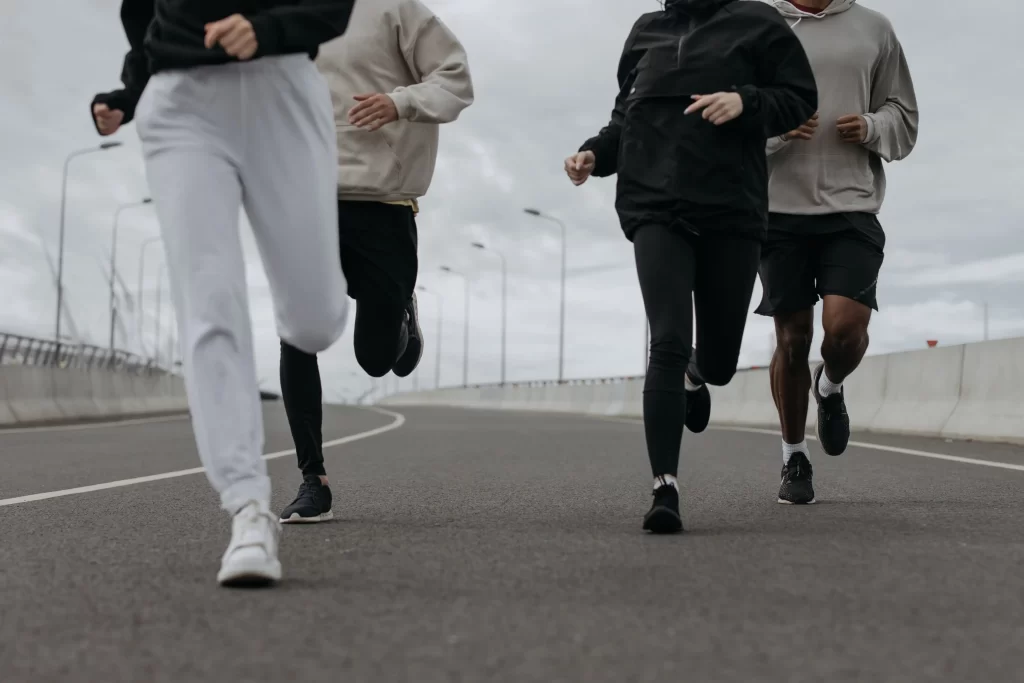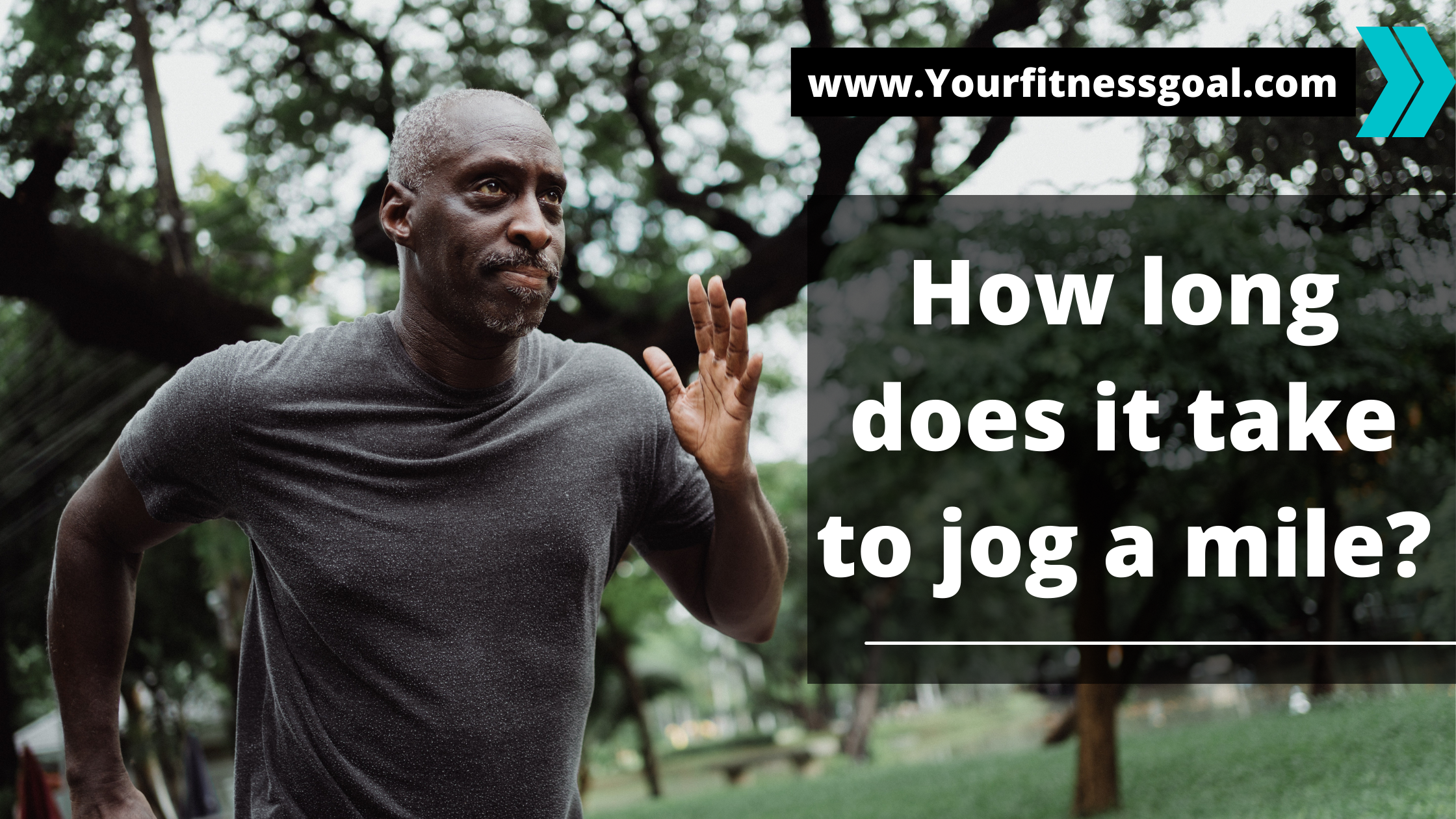Overview
If you are wondering, how long does it take to jog a mile then you should know that the speed at which you can run a mile is determined by a variety of factors, including your fitness level and heredity.
Your degree of fitness is frequently more important than your age or gender. This is because endurance is required to complete the run. The speed at which you run is also determined by the pace and overall distance you are attempting to cover.
A noncompetitive, moderately fit runner typically complete one mile in around 9 to 10 minutes. As you gain endurance, you may be able to run one mile in 12 to 15 minutes if you are new to jogging.
Elite marathon runners run a mile in about 4 to 5 minutes on average. Hicham El Guerrouj of Morocco holds the current world record for one mile at 3:43.13, which he established in 1999.
Average mile times for men vs. women
Running pace can be influenced by gender differences. One of the reasons top male athletes frequently run quicker times than female elite runners is muscular mass. Faster speed may be achieved by having more fast-twitch muscles in the legs.
Women may have an edge over males across greater distances. According to one big study trusted Source, non-elite males were more likely than women to reduce their speed throughout a marathon. It might be related to physiological and/or decision-making differences between men and women, according to researchers.
Pacing for distance running

The pace is vital in a long run. The pace, or the number of minutes it takes to run one mile or kilometer, might have an impact on how quickly you complete the run. For example, you might want to slow down your speed for the first few kilometers of your run.
This may assist you in conserving energy so that you can run the last miles strong. Elite runners may maintain a more cautious pace at the start of an event before increasing up speed toward the finish.
Try this fitness test to determine your average mile pace: Plan a mile run on a level surface near your home, or perform the run on a nearby track.
Warm-up your hands for 5 to 10 minutes. Run one mile and time yourself. Plan to go at a pace that will allow you to challenge yourself but not run at full speed then you will find how long does it take to jog a mile.
how long does it take to jog a mile by age group
The speed at which you run might be affected by your age. The majority of runners attain their peak speed between the ages of 18 and 30. In a 5K (5-kilometer or 3.1-mile race), the average running pace per mile is as follows.
This information was gathered in the United States in 2010 and is based on the timings of 10,000 runners.
Precautions
If you’re new to running, it’s crucial to gradually increase your distance to avoid injury. As you improve your speed and endurance, try to add a few additional miles to your weekly running routine every two weeks.
To keep safe and healthy when running, take the following precautions:
- Change up your regimen by cross-training once or twice a week to keep your muscles engaged.
- When feasible, run with a family member or a dog.
- When running outside, use sunscreen.
- Run in well-lit, well-protected locations. Wear fluorescent clothing in the early morning or late evening.
- Do not run on the road while using headphones. You must be able to hear vehicles and stay alert to your surroundings.
- Replace your running shoes every 300-500 kilometers.
- Keep identification with you at all times when you run. Inform a friend, roommate, or family member of your plans.
- Run in loose-fitting, comfortable clothes and running shoes.
- Keep identification with you at all times when you run. Inform a friend, roommate, or family member of your plans.
- Stretch after running and warm-up before running.
Also Read: How to detox your body : Full body detox
Tips For Running A Mile
1. Boost Your Mileage
Even if your main goal is to develop speed, putting in extra miles can strengthen your lungs and muscles.
Developing that endurance can help you run faster on your next quick run. A weekly long run can help you improve your shorter, quicker runs throughout the week.
2. Take a Longer Stride
Your running stride has a significant impact on your ability to run faster. Opening up your steps gives you more momentum and drives you onward.
If you overstep, lengthening your step might slow you down. Lifting your foot and leg higher allows you to land and push off with more momentum. Your foot should fall just below, not past, your outstretched knee.
Try trying both stances on your next run and see which one makes you faster. I’m quite sure it’ll be the open stride vs. the overstepping.
3. Establish three levels and three-time goals.
Take your ultimate aim first. Then divide it into three tiers. Determine a time limit for each level. The easiest method to accomplish a large objective is to break it down into smaller portions and tackle them one at a time.
Whether your aim is three weeks or three months, you’ll be overjoyed every time you finish one of those stages.
4. Put on High-Quality Running Shoes
Don’t put yourself in danger of damage or agony if you don’t have to. Invest in shoes right now. If you wonder how long does it take to jog a mile the ideal running shoes will be well-fitting to your foot and will complement your running stride and goals (distance, speed, trails, etc.) Other characteristics to look for are:
- Lightweight soles that will not weigh you down.
- Extra space in the toes to allow for swelling while you run.
- Additional lacing holes at the top to secure your foot and protect it from slipping.
- Slip resistance is provided by traction in the soles.
- Visit a running store in person if you’re unsure how to buy the correct pair of shoes for your foot. They will have professional personnel who will examine your foot and running stride to select the best shoe for you.
Keep in mind that each pair should be replaced every 300-500 miles. Running programs like Strava will assist you in tracking this. Strava will even notify you when it’s time to replace your shoes.
5. Experiment with Breathing
To understand, how long does it take to jog a mile – Nothing aggravates a side soreness like irregular breathing patterns. The most basic approach to check your breathing is to make sure you have equal beats in and out.
Inhale for 4 seconds, then exhale for 4 seconds. That won’t be feasible as you grow more winded, but constantly count your breaths and maintain them even and equal on the inhale and exhale.
6. Do Not Contrast Yourself with Others
You most likely follow other runners on social media or via running apps. It’s critical to stay motivated and to visualize your future self.
But, as we all know, social media may cause us to have unrealistic expectations of ourselves. So keep your scrolling in check by putting yourself first… as well as avoiding comparisons.
7. Practice cadence
Some individuals wrongly believe that cadence is synonymous with speed.’ Not at all! Cadence is the process of becoming faster through appropriate form and technique. Improving your cadence entails the following:
Maintain good posture by maintaining a straight back and shoulders.
Arms position – your arms should not swing out past your body when running but should remain equally aligned with your torso.
Foot strike — instead of landing on your heel, strike the ground with your forefoot or midfoot.
Engage your core and posterior chain to ensure you feel the proper muscles during your run to boost your cadence even more.
8. Interval Training
Even if you can run a mile without stopping, interval runs should be done as a kind of crosstraining. Taking a short stroll replenishes your body and prepares it for another round of rapid running.
Also Read: Flat Belly Fix Reviews: The 21 Day System Real or Fake?
Conclusion
For the question, how long does it take to jog a mile – Your running pace can be influenced by a variety of factors, including age and gender. However, boosting your fitness level and endurance might help you get quicker.
If you want to enhance your average mile time, do the following:
- Each week, try to complete a variety of exercises. Incorporate a long run into your exercise plan, followed by a speed or interval training session on a track or trail.
- Inclines (hills) can help you increase leg strength.
- To avoid damage, gradually increase your speed and endurance.
- When you’re out for a run, stay hydrated.
- Before starting a new fitness routine, get approval from your doctor.

Hey, y’all! I’m Akshay!
I’m SO excited you’re here! I’m super passionate about nutrition and specialize in teaching others how to lose weight through healthy, low-carb eating along with Yoga and exercises. Here at Yourfitnessgoal, we believe in quality over quantity and that diet is EVERYTHING when it comes to your health and well-being. In short, we believe in a Fit and healthy lifestyle.

